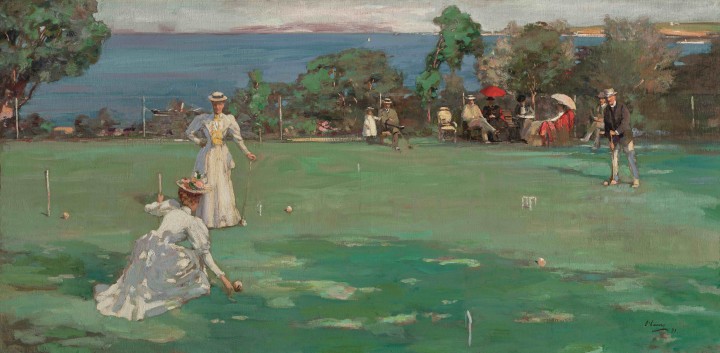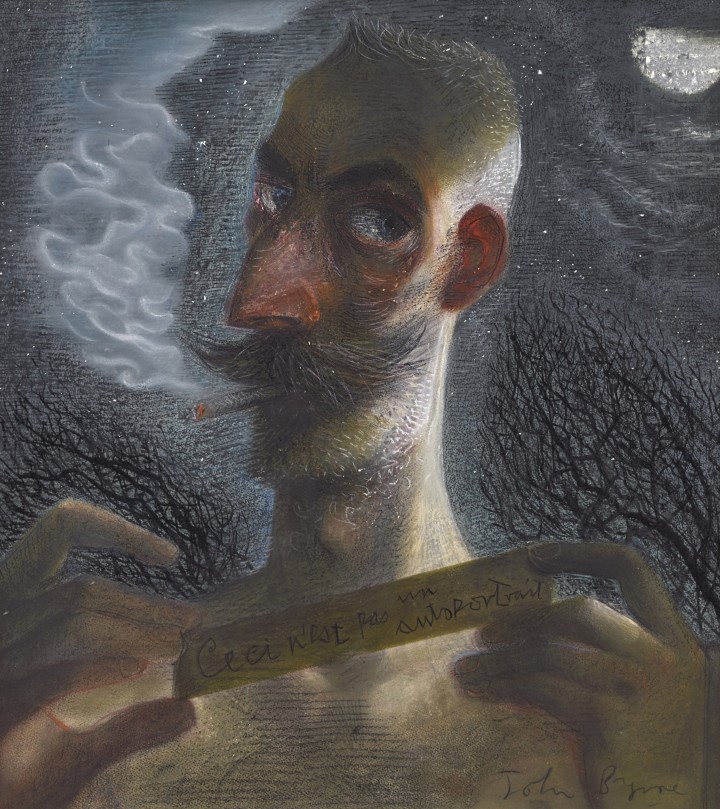Scottish Art News
Latest news
Magazine
News & Press
Publications
The Scottish Art Market
By Susan Mansfield, 01.07.2022
 - roses and fruit - lyon & turnbull .jpg)
Of all the lessons we learned in the pandemic, one of the more surprising ones is this: global lockdowns are good for the art market. A cluster of factors – people spending more time at home and considering improvements, disposable cash which might have been spent on travel – led to a ‘mini boom’ in the buying of art and antiques. Lockdown meant everyone had plenty of time to absorb online content from galleries and get to grips with bidding in internet auctions.
Galleries, dealers and auction houses all reported record results during the pandemic, the best of them during the periods of full lockdown. However, more than two years since the first lockdown began, the situation has changed. While some of the new habits acquired during the pandemic are here to stay, others are being sloughed off as ‘real life’ returns. Meantime, the post-pandemic world is presenting different challenges.
Edinburgh-based auction house Lyon & Turnbull was a pioneer of online sales in April 2020. The company has reported record results for the last two years, 2021 being their strongest year to date with sales of £26 million (88 per cent higher than pre-pandemic levels) and a 15 per cent rise in new buyers. Online sales have brought a resurgence of international buyers, particularly from North America.
 John Lavery, The Croquet Party, 1890-93. Photo © Christie's Images / Bridgeman Images
John Lavery, The Croquet Party, 1890-93. Photo © Christie's Images / Bridgeman Images
That momentum has brought a strong start to 2022, and managing director Gavin Strang is ebullient: ‘Things may be settling down a little bit, but we’re still seeing very strong results. Good quality examples of almost everything are seeing a lot of interest. Things which aren’t the best examples are a little sluggish, but the market remains very robust, particularly for the best items.’
The Scottish Colourists take some of the highest prices in Scottish art, and Lyon & Turnbull’s flagship Scottish Paintings and Sculpture sale in December saw Samuel Peploe’s ‘Roses and Fruit’ sell for £735,000. The six Peploes in the sale fetched a total of £1.17 million and there were also high prices for Francis Cadell, Anne Redpath and Joan Eardley.
Strang’s analysis of the market was borne out by the Modern British and Irish Art sales at Christies in March. In the evening sale, Peploe’s ‘White Roses’ sold for £441,000, while Cadell’s ‘Still Life with Tulips’ sent prices soaring up to £724,000. Meanwhile, ‘The Croquet Party’ by ‘Glasgow Boy’ John Lavery pushed expectations upwards, selling for £2.9million.
The day sale saw paintings by Alan Davie, Craigie Aitchison, Anne Redpath and Elizabeth Blackadder firmly exceeding estimates, while less distinguished works by Eduardo Paolozzi and a more traditional early Peploe were disappointing.
 exposed painting, paynes grey-cobalt, 1995 image (c) the artist .jpg) Callum Innes, Payne Grey-Cobalt, 1995. Image © the artist
Callum Innes, Payne Grey-Cobalt, 1995. Image © the artist
Strang says that, while traditional art had something of a resurgence in the darkest days of lockdown, the barometer of taste is now pointing firmly back to modern and contemporary art, including abstract art like the work of Edinburgh- based Callum Innes, a painting by whom was a highlight of April’s contemporary sale.
‘There’s nothing nicer when you’re worried about where the world is going than a misty-looking Highland glen and some cows to calm the soul,’ says Strang. ‘But modern and contemporary art has been the zeitgeist for some time and remains so, from the Colourists to Howson, Bellany and beyond. Prints and multiples is a growing market and a great way for younger audiences to engage.’
Perhaps what has changed most is the nature of the auctions themselves. ‘People come to view things, but often don’t stay for the sale. If they trust the technology, it’s easier to dial in via their mobile phone or their computer screen. As auctioneers, we’ve had to re-learn our craft and play to people who we can’t see.’
Meanwhile, in the gallery sector, dealers are pleased to be welcoming people back through the doors. For many, 2021 was a repeat of 2020: very successful online sales during lockdown, followed by a brief euphoric return to gallery visits in the summer, tailing off in the autumn with rumours of new Covid variants.
While many of the developments of lockdown are here to stay (weekly emails, 3D Matterport technology for online viewings, increased social media presence), galleries now face the challenge of doing these things in addition to everything they did before.
 John Byrne, Ceci n'est pas un autoportrait, 2003. Image © the artist. Image courtesy of the Fine Art Society.
John Byrne, Ceci n'est pas un autoportrait, 2003. Image © the artist. Image courtesy of the Fine Art Society.
Emily Walsh, managing director of Edinburgh and London-based gallery The Fine Art Society, says: ‘For the first time in two years, it feels like we are able to plan. We are now offering a full programme of events again and there is a real appetite for them. People are pleased to be out amongst other people and it’s so nice to walk into a gallery without an appointment. We want to remind people they can come in. As good as digital is, coming to look at pictures in the flesh is what it’s really about.’
A few doors further down Dundas Street at The Scottish Gallery, managing director Christina Jansen has also had two good years. A particular highlight was the Joan Eardley Centenary exhibition in August 2021 which not only had a significant digital presence, it had visitors queueing up the street for socially distanced viewings, and resulted in a significant increase in Eardley prices for the gallery.
As Covid recedes, Jansen sees other challenges on the horizon: the ongoing impact of Brexit, the war in Ukraine, fuel bills sky-rocketing and the long-term economic effects of the pandemic. These not only bring pressures on the gallery as a business – she says their fuel bills could treble – but are also likely to affect the art-buying public.
‘This is likely to be a tough year for everyone, with inflation, mortgage costs and fuel bills increasing. Maybe these are reasons not to invest in art. Covid is still with us, but, as a health crisis, it is not the number one priority any more; it’s more about the consequences globally and the impacts locally.
‘We knew it was going to be difficult coming out of Brexit and the pandemic has to be paid for. Now we are in a different phase. We need to play to our strengths and make sure we are looking after our artists. We’re in a strong position but we are prepared for what might be a bumpy ride.’
 Queue outside of the Scottish Gallery. Courtesy the Scottish Gallery.
Queue outside of the Scottish Gallery. Courtesy the Scottish Gallery.




